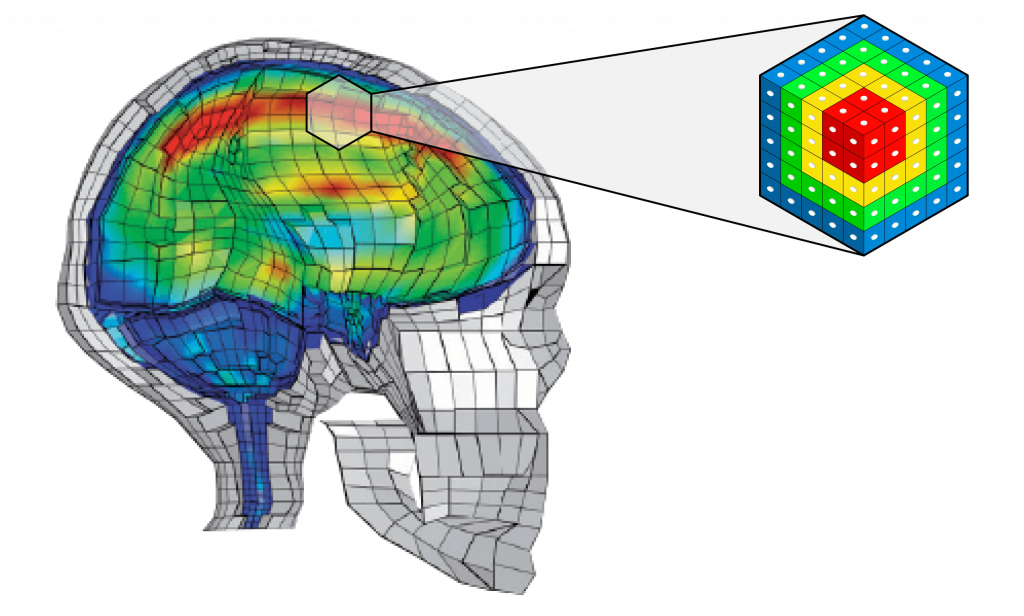Mips has access to a state-of-the-art 3D numerical model of the human head, developed by Professor Svein Kleiven at Sweden’s Royal Institute of Technology (KTH). This computational model represents the most critical parts of the human head, including the skull, brain and other tissues, and relies upon the finite element FE method, a numerical method widely used when building houses and bridges or simulating car crashes. At Mips, we use the head FE model to simulate helmeted head impacts and to evaluate the risk of different types of head injuries.
In a helmet test, the instrumental head form measures the linear and angular accelerations. While we could use the acceleration pulses to predict the risk for a brain injury, the strain commuted by the FE model has been shown to better predict the risk of brain injury than the acceleration-based criteria.

The model incorporates 50.000 elements connected with nodes (think “LEGO”, except in a computer program), allowing us to apply acceleration pulses to the elements representing the skull in the model. The FE software (LSDYNA) then computes the strain (deformation) in each element representing the brain.
When applying an acceleration pulse to the head model, the brain deforms in different patterns depending on the impact direction and pulse. Our interest is in the strain that has been shown to correlate well to trish of a brain injury such as concussion.
We use the FE model to test the same model of the helmet with and without the Mips® safety system. By comparing the brain strain induced by the FE model in both helmet versions, we can be sure that when the Mips® safety system-equipped helmet reduces stress on the brain, the results are accurate and repeatable.
The FE model developed at KTH in Stockholm is exceedingly robust. It is used by 20 scientific publications and has even predicted the precise location of brain injury in real-world accident reconstructions.